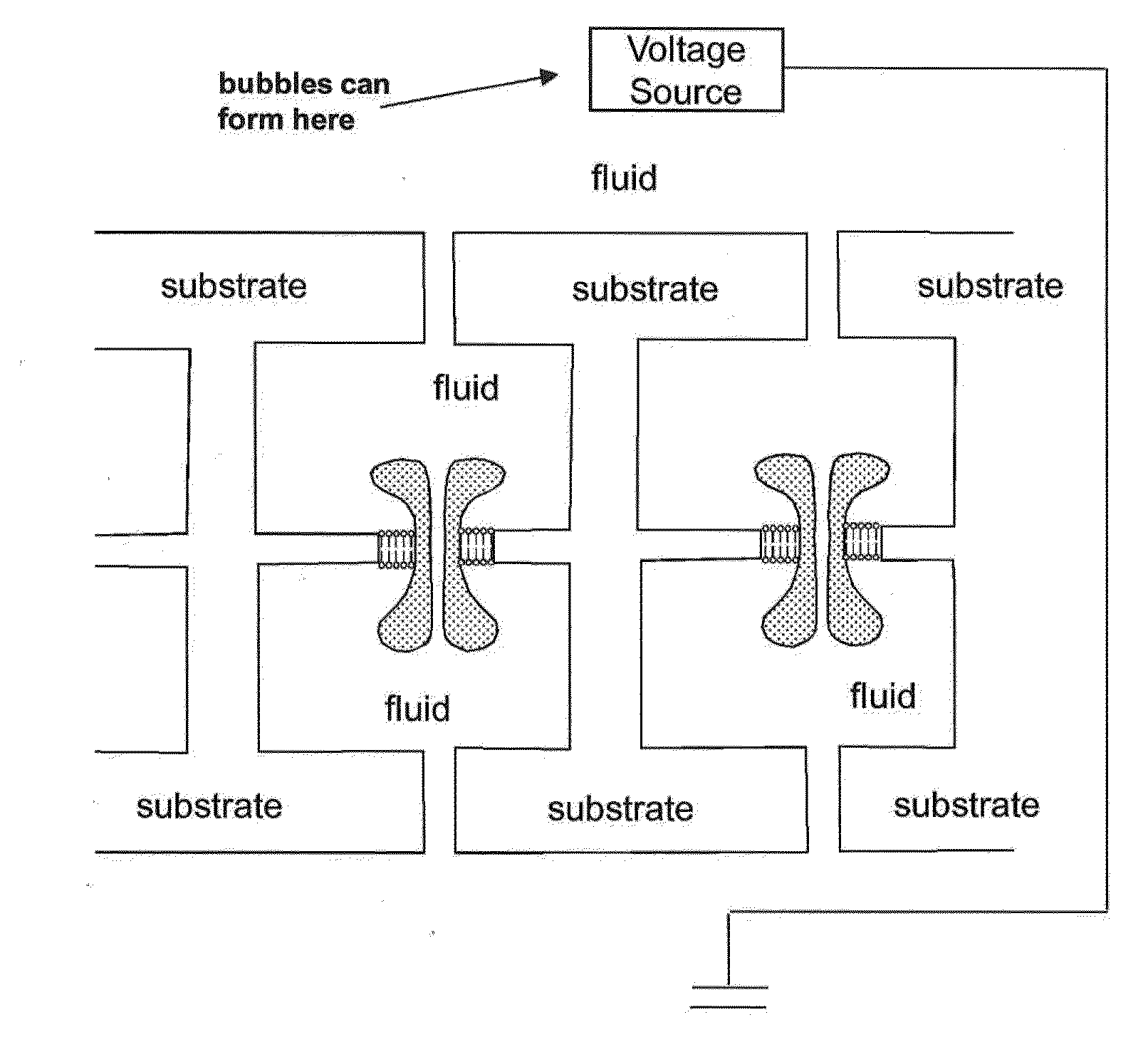Nanopore sequencing using n-mers
a technology of nanopores and mers, which is applied in the direction of fluid pressure measurement, liquid/fluent solid measurement, peptides, etc., can solve the problems that devices using nanopores to sequence dna and rna molecules have generally not been able to read sequence at single-nucleotide resolution
- Summary
- Abstract
- Description
- Claims
- Application Information
AI Technical Summary
Benefits of technology
Problems solved by technology
Method used
Image
Examples
example 1
Sequencing with Polymerase Enzyme in Nanochannel—SiN
[0254]In one embodiment, an array of 256×256 nanochannels, each with approximate dimensions 100-nm×40-nm×40-nm, are fabricated in a silicon nitride (SIN) substrate using techniques well-known in the art. While surfaces outside the nanochannels are passivated with an inert polymer, such as PEG, the inner surface of each channel is modified with biotinylated silane using techniques well-known in the art. A φ29 DNA polymerase, modified to have a C- or N-terminal biotin tag, is conjugated to streptavidin. A DNA template, e.g. a cyclic DNA template such as a SMRTbell (Pacific BioSciences) with a primer, is captured by the polymerase. This streptavidin / polymerase / DNA complex is then loaded onto the nanochannel array at a concentration and for a duration such that ˜37% nanochannels contain only a single complex (Poisson loading). The nanochannels are bathed in a solution containing the necessary components for both DNA synthesis by the po...
example 2
Sequencing with Polymerase Enzyme in Nanochannel—SiOx
[0255]In another embodiment, an array of 256×256 nanochannels, each with approximate dimensions 100-nm×40-nm×40-nm, are fabricated in a silicon oxide (SiOx) substrate using techniques well-known in the art. While surfaces outside the nanochannels are passivated with an inert polymer, such as PEG, the inner surface of each channel is modified with biotinilated silane using techniques well-known in the art. A φ29 DNA polymerase, modified to have a C- or N-terminal biotin tag, is conjugated to streptavidin. A DNA template, e.g. a cyclic DNA template such as a SMRTbell (Pacific BioSciences) with a primer, is captured by the polymerase. This streptavidin / polymerase / DNA complex is then loaded onto the nanochannel array at a concentration and for a duration such that ˜37% nanochannels contain only a single complex (Poisson loading). The nanochannels are bathed in a solution containing the necessary components for both DNA synthesis by th...
example 3
Sequencing with Polymerase Enzyme in Nanochannel—Polymeric Substrate
[0256]In another embodiment, an array of 256×256 nanochannels, each with approximate dimensions 100-nm×40-nm×40-nm, are fabricated in a polymeric substrate with backbone containing thiol-acrylate using techniques well-known in the art. While surfaces outside the nanochannels are passivated with an inert polymer, such as PEG, the inner surface of each channel is modified with biotinylated maleimide using techniques well-known in the art. A φ29 DNA polymerase, modified to have a C- or N-terminal biotin tag, is conjugated to streptavidin. A DNA template, e.g. a cyclic DNA template such as a SMRTbell (Pacific BioSciences) with a primer, is captured by the polymerase. This streptavidin / polymerase / DNA complex is then loaded onto the nanochannel array at a concentration and for a duration such that ˜37% nanochannels contain only a single complex (Poisson loading). The nanochannels are bathed in a solution containing the ne...
PUM
| Property | Measurement | Unit |
|---|---|---|
| temperatures | aaaaa | aaaaa |
| diameter | aaaaa | aaaaa |
| diameter | aaaaa | aaaaa |
Abstract
Description
Claims
Application Information
 Login to View More
Login to View More - R&D
- Intellectual Property
- Life Sciences
- Materials
- Tech Scout
- Unparalleled Data Quality
- Higher Quality Content
- 60% Fewer Hallucinations
Browse by: Latest US Patents, China's latest patents, Technical Efficacy Thesaurus, Application Domain, Technology Topic, Popular Technical Reports.
© 2025 PatSnap. All rights reserved.Legal|Privacy policy|Modern Slavery Act Transparency Statement|Sitemap|About US| Contact US: help@patsnap.com



